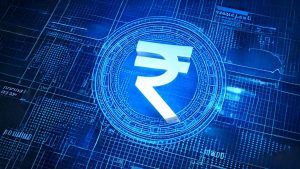Direct tariff electricity subsidies from the state governments have increased 32 per cent since FY 2016, amounting to Rs 1,10,391 crore ($14.96 billion) in FY 2019, an independent report by the Council on Energy, Environment and Water (CEEW) and the International Institute for Sustainable Development (IISD) said on Thursday.
The report estimates that “cross-subsidies” — high tariffs for some consumers to cover below-cost tariffs for other consumers — were worth at least another Rs 75,027 crore ($10.2 billion) in FY 2019, bringing the national total to at least Rs 185,418 crore ($25.2 billion).
According to the CEEW-IISD study, 25 out of 31 states and union territories (UTs) have failed to meet the requirements of the Ujjwal DISCOM Assurance Yojana (UDAY) scheme to reduce aggregate technical and commercial losses (AT&C) to 15 per cent.
Poor collection is typically the biggest contributor to these losses. The states that have met the UDAY targets on AT&C losses in FY 2019 include Delhi, Gujarat, Kerala, Maharashtra, Punjab, and Himachal Pradesh.
Further, Jammu and Kashmir and Sikkim both stand out for a significant reduction in the power supply cost in FY2019.

Since FY 2016, revenue from sales across all DISCOMs has fallen by three per cent, while 24 of the 31 states had a revenue gap in 2019. Of the 26 states and UTs that subsidize electricity, not one managed to bill consumers as per the stipulated tariff limits under the National Tariff Policy 2016.
Analysts highlight that this is a vicious cycle: poor financial performance increases reliance on electricity subsidies, and badly designed subsidies contribute to poor DISCOM finances.
“With commercial and industrial consumers shifting to supply options outside of the DISCOMs like open access or even producing their own power, the dependence on subsidy is bound to increase,” says Prateek Aggarwal, Programme Associate at CEEW.
“States need to target benefits specifically to low-income consumers and work on improving the general state of unmetered consumption for domestic and agriculture consumers. Further, state governments, DISCOMs, and regulators must work to loop in efficiency in power procurement planning and operations and also ensure adequate investments are made for the long-term improvement of billing and collection systems.”
To better understand these challenges, the researchers investigated electricity subsidy design across India’s states and UTs.

Nationally, they found that agricultural consumers were allotted 75 per cent of total government subsidy support for electricity.
The report also identifies design problems with residential consumer subsidies too. Most states, barring Delhi, Haryana, Tamil Nadu and Uttar Pradesh, do not clearly specify for how many units the subsidy is on offer and as a result the ultimate beneficiaries cannot be identified.
Also Read: US Congress Backs India, Says Chinese LAC Claims ‘baseless’





